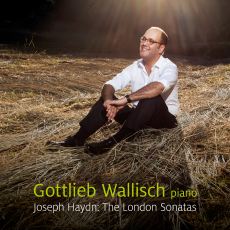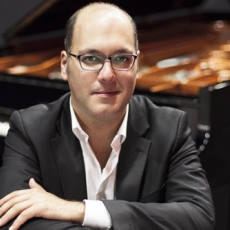Gottlieb Wallisch - Haydn: The London Sonatas - Audiophile Audition
My first acquaintance with Linn artist Gottlieb Wallisch was through his very fine recording of Mozart piano works from the composer's Vienna years (Linn CKD 352). These performances showed Wallisch to be a sensitive, unfussy interpreter of the classics. Since then, he has been featured on other Mozart discs, including one involving the Piatti Quartet in chamber-music settings of Mozart concertos. If I avoided that disc, it's only because boiled-down versions of concertos aren't my cup of tea. But the final great quartet of Haydn piano sonatas certainly is, and I'm glad to see Wallisch turn his attention to Mozart's older friend and colleague.
Haydn was a competent keyboardist but by no means a virtuoso, and many of his earlier works for keyboard are modest in their demands, probably reflecting both their dedicatees and the market for which they were written, publishers always hungry for new compositions for the amateur musician. During his two London sojourns, however, Haydn had contact with the finest of professional musicians, including pianist Therese Jensen (for whom he also wrote some of his greatest piano trios). And just as Haydn's orchestral palette expanded thanks to the large, highly professional bands for which he wrote his London Symphonies, his late sonatas reflect the virtuoso pianists and virtuoso instruments-with their expanded keyboards-for which he composed.
While Mozart wrote his sonatas for the standard five-octave instruments of his day, Haydn and Beethoven could take advantage of advancements in piano design and construction around the turn of the century. These included the addition of a half-octave to the keyboard, plus additional pedals, allowing for greater expressive control. The effect of these advantages on Haydn's compositional style is evident in Sonata No. 60, with its eloquently songful Adagiomiddle movement and mercurial first movement, where skittish runs contrast with big, bass-heavy chords and declamatory rolled ones. Like some of the movements in Haydn's late symphonies (the finale of Symphony 103, for example), this first movement is monothematic,meaning that the second "theme" is really just a slight variant of the "first" theme. If Beethoven, as he maintained, didn't learn much while under in Haydn's tutelage, he later managed to learn a thing or two from movements such as these.
As the Gottlieb Wallisch's notes to the recording state, Sonata No. 61 is the Cinderella of Haydn's late sonatas, oddly cast in two movements, the first of which is a sonata-formAndante(!) But it is, after all, late Haydn, so it has its points: the first movement, given its slower tempo, manages to be both stately and sprightly, and the Presto finale has a scherzo-like fantasy about it. But I can't buy into Wallisch's contention that the first movement "with its elongated vocal sections, seems to look far ahead into the nineteenth century, perhaps as far as Schubert." It all seems comfortably Classical and late eighteenth century to me.
Then we have the granddaddy of Haydn sonatas, No. 62, written for the aforementioned London-based virtuoso Therese Jensen, a work that rivals the technical demands of Mrs. Jensen's teacher, Muzio Clementi. However, in place of Clementi's cosmopolitanism, we have Haydnesque wit and humor-except, of course, in the stately Adagio slow movement.
With the final two works on the program, we return to Haydn's homeland and its inspirations. Sonata No. 59 was the last Haydn composed in Esterháza, commissioned by Anna Jelischek, soon-to-be wife of violinist Johann Tost, with whom Haydn had a falling out over claims of musical piracy. But that's another story. In any event, the dedicatee of the piece is not Fraulein Jelischek but one Marianne von Genzinger, a gifted amateur pianist and close friend of Haydn. There is speculation that she was more than a friend, though if Haydn was in love with her, he probably loved this mother of six at a respectable distance. The sonata he dedicated to her is as attractive and accomplished in its quiet way as the trio of virtuoso sonatas he wrote in London. The mostly dark and eventually impassioned Variations in F Minor also have a connection to Marianne, a sad one, as it's believed that in this work Haydn lamented the death of his friend in 1793.
All these works are shaped with skill and obvious affection and understanding by Gottlieb Wallisch. He brings passionate intensity to those uncharacteristically brooding F Minor Variations but also equal measures of wit and tenderness to the trio of London sonatas and the last of Haydn's Esterháza sonatas. Only in the finale of No. 62 did I find a touch of squareness (or stuffiness) in Wallisch's interpretation. I had at hand Jeno Jandó's very fine recording of these sonatas on Naxos and discovered that Jandó shaves forty-nine very telling seconds off Wallisch's timing in this finale, and the result is a true, lively, and impetuous Presto. But this slightly leaden finale is the only lapse I can cite in an otherwise admirable recital by Gottlieb Wallisch, all captured in a characteristically rich, ringing, sonorous surround SACD recording from Linn. Recommended, then, with only the slightest of reservations.

